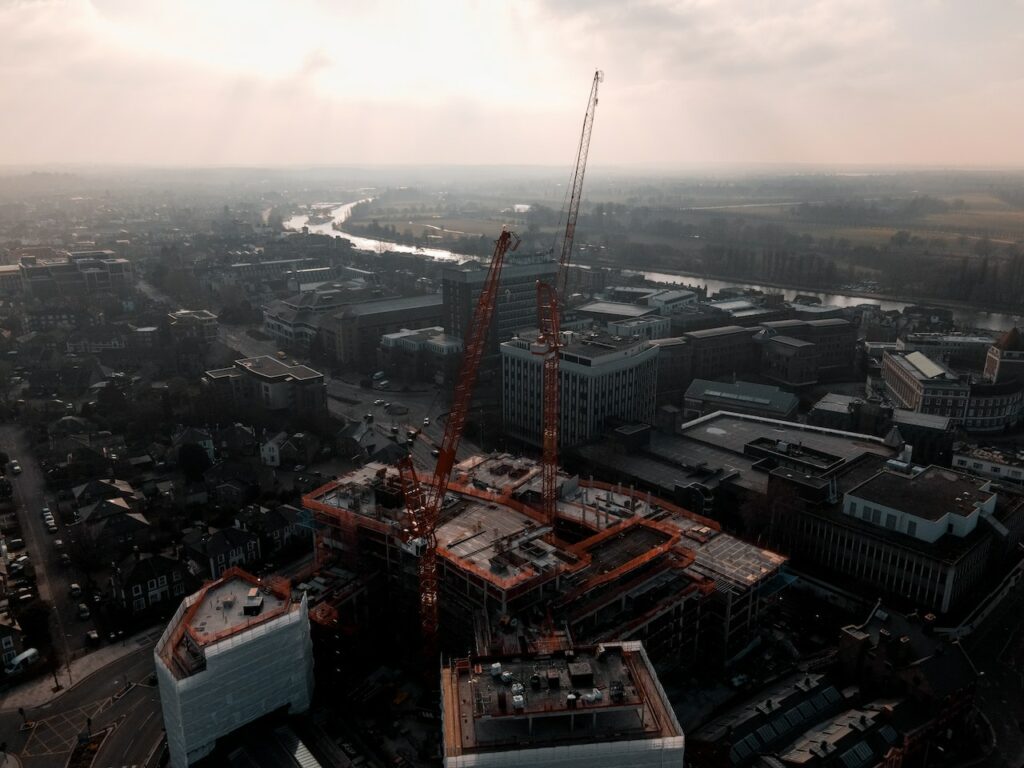When you look at a towering skyscraper under construction, one question that often comes to mind is, “How do cranes get on top of buildings?” It seems like an impossible task to lift such massive machinery to great heights. However, the process of getting cranes on top of buildings is both fascinating and essential for the successful completion of construction projects. In this article, we will delve into the methods used to position cranes at the highest points of buildings and shed light on the intricate logistics involved.
The Importance of Cranes in Construction
Cranes play a pivotal role in the construction industry, facilitating the movement of heavy materials, equipment, and workers at elevated heights. Without cranes, the construction of high-rise buildings would be nearly impossible. These powerful machines enable the efficient and safe handling of construction materials, such as steel beams, concrete, and prefabricated components, significantly reducing the time and effort required for construction projects.
Different Types of Cranes Used
Before we explore how cranes reach the top of buildings, it’s crucial to understand the various types of cranes commonly used in the construction industry. Some of the most widely employed crane types include mobile cranes, tower cranes, crawler cranes, and self-erecting cranes. Each type has its unique characteristics and applications, ensuring versatility in different construction scenarios.
Mobile Cranes
Mobile cranes are versatile and can be easily transported to construction sites. They are mounted on wheeled vehicles and offer flexibility in terms of mobility and reach. These cranes are ideal for projects requiring frequent repositioning or where space constraints limit the use of larger cranes.
Tower Cranes
Tower cranes are the most commonly seen cranes in urban construction sites. They are renowned for their immense height and lifting capacity. Tower cranes are assembled on-site and anchored to the ground, providing stability for lifting heavy loads to great heights. They consist of a vertical mast and a horizontal jib that can rotate 360 degrees.
Crawler Cranes
Crawler cranes are equipped with a set of tracks instead of wheels, allowing them to traverse rough terrain with ease. These cranes offer excellent stability and are often used in construction sites where the ground conditions are challenging. Crawler cranes are capable of lifting extremely heavy loads and are known for their robustness and durability.
Self-Erecting Cranes
Self-erecting cranes are compact and versatile machines designed for smaller construction projects. They feature a telescopic mast that can
extend and retract, allowing for easy assembly and disassembly. These cranes are ideal for confined spaces and projects that require frequent relocation.

Ollie Craig
Preparing the Foundation
Before a crane can be positioned on top of a building, thorough planning and preparation are necessary. The foundation must be designed and constructed to support the crane’s weight and ensure stability during operation. Here are the key steps involved in preparing the foundation:
Planning and Design
Engineers carefully analyze the construction site and create a foundation plan that considers factors such as soil conditions, load requirements, and structural integrity. They determine the optimal location for the crane and design a foundation that can withstand the forces exerted by the crane during operation.
Structural Integrity
The foundation must be structurally sound to support the crane’s weight and the loads it will lift. Reinforced concrete pads or footings are often used to distribute the load and provide a stable base. The dimensions and specifications of the foundation are determined based on the crane’s size, type, and anticipated load capacity.
Assembling the Crane Components
Once the foundation is ready, the crane components are transported to the construction site and assembled. Here’s a step-by-step process of how the crane is put together:
Transportation to the Construction Site
The crane components, including the mast sections, jib, counterweights, and control systems, are transported to the site using specialized heavy-duty vehicles. Careful coordination and logistics are required to ensure all components arrive safely and on time.
Erecting the Crane Base
The first step in assembling the crane is erecting the base. This involves attaching the mast base to the foundation and securing it in place. The base provides stability and serves as the anchor point for the rest of the crane’s structure.
Installing the Tower Sections
Tower cranes are constructed in sections that are progressively added as the crane reaches higher heights. Each tower section is carefully lifted into place using mobile cranes or the crane’s own lifting capacity. The sections are secured and connected to form the vertical mast.
Attaching the Counterweights
Counterweights are crucial for maintaining the crane’s stability while lifting heavy loads. They are added to the back of the crane’s mast to balance the weight being lifted. The counterweights are carefully calculated and installed to ensure the crane remains balanced throughout its operation.

Aleksandar Pasaric
Buildings in New York and Crane Installation Challenges
Building construction in densely populated cities like New York presents unique challenges for crane installation. The limited space available at construction sites, coupled with the presence of neighboring buildings and narrow streets, requires careful planning and coordination.
Buildings in New York due to the city’s high-rise buildings and narrow streets, installing a tower crane often involves closing streets, obtaining permits, and coordinating with local authorities to ensure public safety. Cranes may need to be positioned on the sidewalk, which requires careful consideration of pedestrian flow and the installation of protective barriers.
Raising the Crane to the Top
Once the crane’s base and mast are assembled, the process of raising it to the top of the building begins. Here’s a breakdown of the steps involved:
Climbing the Tower
Tower cranes are designed to climb vertically as the building progresses. Climbing mechanisms, such as hydraulic jacks or climbers, are used to incrementally raise the crane’s mast to higher levels. This process requires precise coordination and safety measures to ensure a smooth ascent.
Securing the Mast Sections
As the crane climbs, additional tower sections are added and secured to the existing mast. The connections between the sections are carefully inspected and reinforced to maintain the structural integrity of the crane.
Installing the Jib
The jib, or horizontal arm, is attached to the top of the crane’s mast. It extends outwards and provides the reach necessary for lifting materials across the construction site. The jib is connected and secured to the mast using robust mechanical connections.
Connecting the Crane to Power and Control Systems
Once the crane reaches the desired height, it is connected to power and control systems. Electrical cables are routed through the mast to provide electricity for operating the crane’s motors, lights, and other electrical components. Control panels and consoles are installed at a convenient location for the crane operator to monitor and control the crane’s movements.

Naveen Annam
Safety Measures and Considerations
Safety is of paramount importance throughout the process of positioning cranes on top of buildings. Here are several safety measures and considerations that must be taken into account:
Ensuring Stability and Balance
Before the crane is raised to the top of the building, engineers carefully calculate the weight distribution and ensure that the crane’s center of gravity remains within safe limits. Counterweights are positioned correctly to maintain stability, and regular checks are conducted to ensure the crane is balanced during operation.
Securing the Crane against High Winds
Tall buildings are often exposed to strong winds, which can pose a risk to the stability of the crane. Wind sensors and anemometers are installed on the crane to monitor wind speeds. When wind speeds exceed safe limits, the crane’s operation may be halted or restricted until conditions improve. Additional measures such as windbreaks or tie-downs may be implemented to enhance stability.
Rigorous Inspection and Maintenance
Regular inspections and maintenance are crucial to ensure the crane remains in optimal working condition. Qualified technicians inspect the crane’s structural components, mechanisms, and electrical systems for any signs of wear, damage, or malfunction. Any issues are promptly addressed to prevent accidents and maintain the crane’s reliability.
Positioning cranes on top of buildings is an intricate process that involves careful planning, precise assembly, and adherence to safety protocols. The combination of engineering expertise, specialized equipment, and skilled labor ensures that cranes can reach great heights and contribute to the successful completion of construction projects.
By understanding the methods employed to position cranes on top of buildings, we gain a deeper appreciation for the complex logistics and engineering involved in the construction industry. The presence of cranes atop towering structures is a testament to human ingenuity and our ability to overcome challenges in pursuit of architectural marvels.
